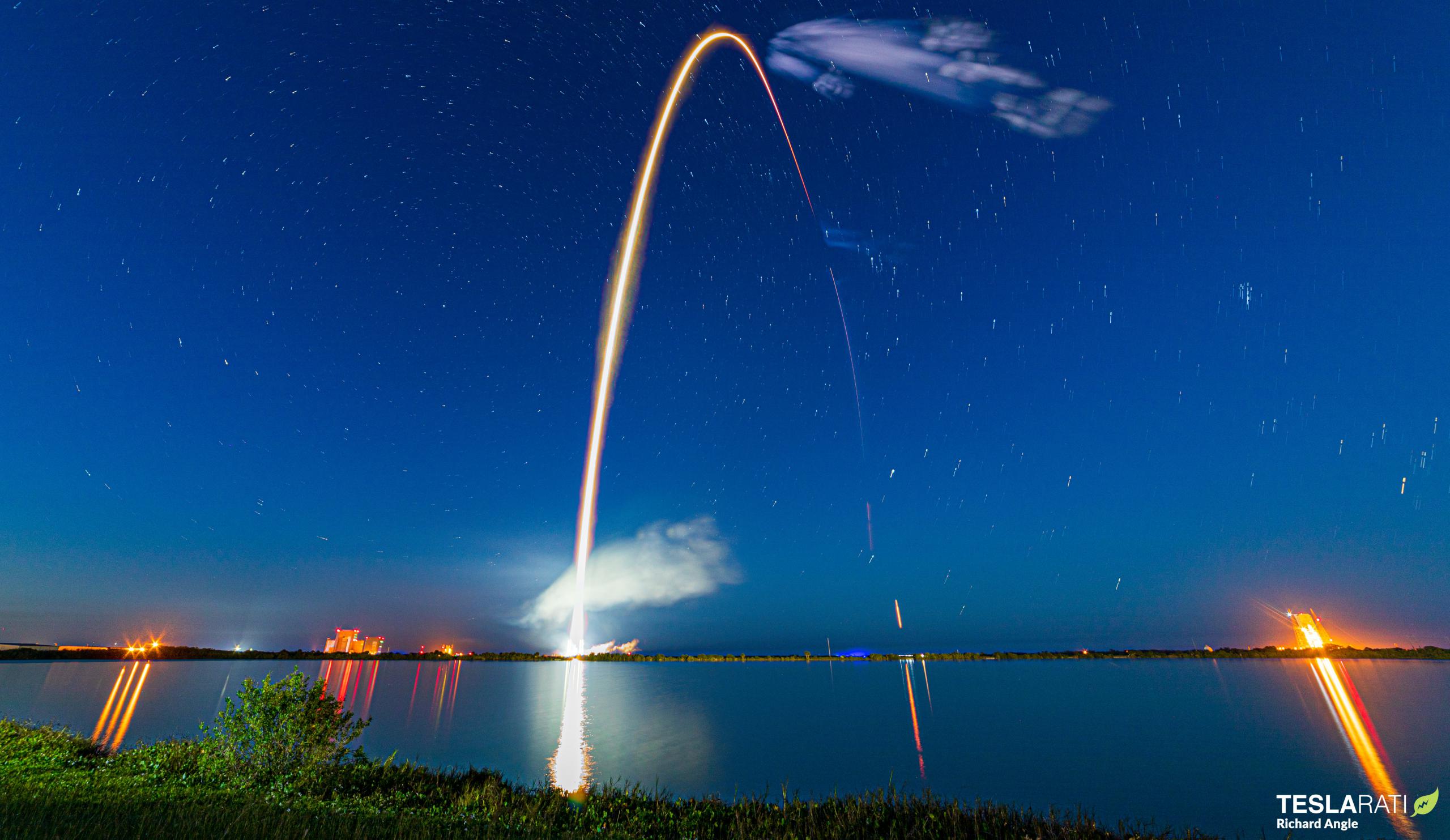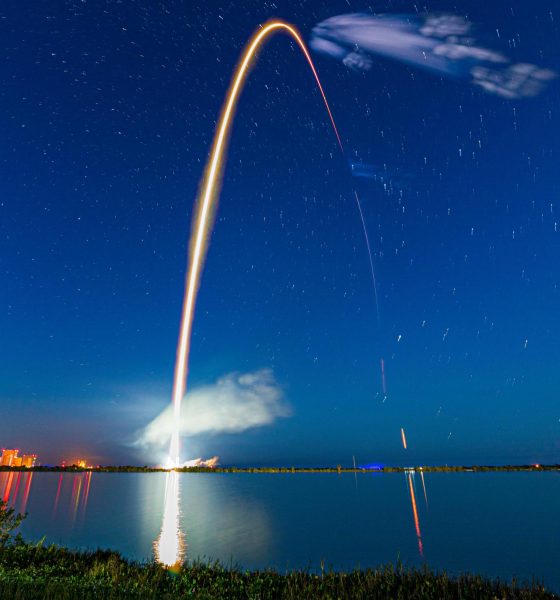SpaceX has successfully launched 48 more Starlink V1.5 satellites and two rideshare payloads, simultaneously breaking its record for annual launches and making Falcon 9 the most consecutively successfully flown rocket in Western history.
After a small one-day delay, Falcon 9 booster B1060 lifted off for the ninth time at 6:12 pm EST (23:12 UTC), likely missing the opportunity for a spectacular artificial rocket ‘nebula’ but just a few minutes. Nevertheless, Falcon 9 performed flawlessly, acing its ninth landing in 18 months and sending an expendable upper stage and about 14 metric tons (~31,000 lb) of satellites on their way to orbit. The second stage reached an initial parking orbit around nine minutes after launch and coasted for almost an hour before reigniting to insert its Starlink and Blacksky payloads into the correct orbit.
Almost exactly mirroring Blacksky’s first August 2020 Starlink rideshare mission, Falcon 9 first deployed the company’s two ~60 kg (~130 lb) Earth observation satellites around T+1:03. The second stage then gradually spun itself up end over end before releasing all 48 Starlink V1.5 satellites at once ~90 minutes after liftoff, marking the end of Falcon 9’s 101st consecutively successful orbital launch and SpaceX’s 27th launch of the year – new records for western spaceflight and the company, respectively.

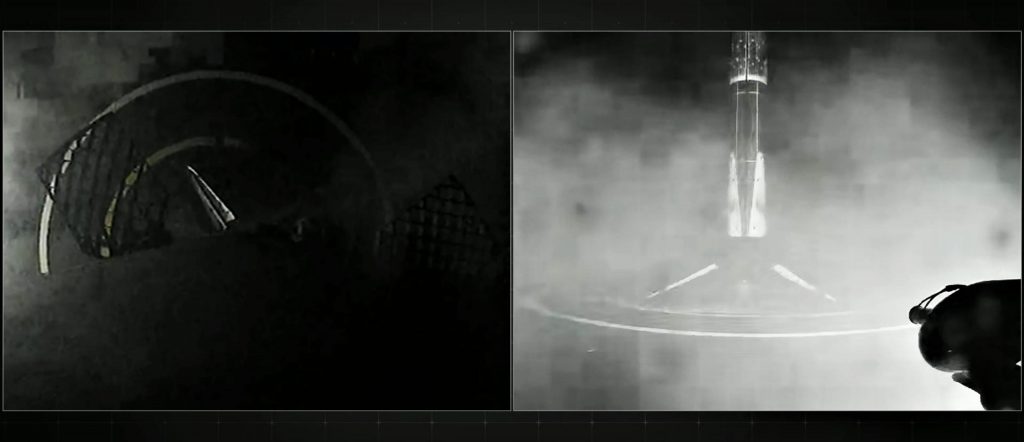
As previously discussed on Teslarati, with Starlink 4-3, SpaceX’s Falcon 9 workhorse has become the first western rocket in history to surpass 100 consecutive launch successes, beating out McDonnell Douglas’ (and, later, ULA’s) Delta II rocket.
“As pointed out by a Teslarati reader, Starlink 4-3 could also see Falcon 9 become the first American rocket in history to successfully complete more than 100 orbital launches in a row, narrowly beating out McDonnell Douglas’ retired Delta II rocket for the title. Earlier this year, many outlets already reported that SpaceX’s May 26th Starlink-28 launch was its 100th consecutive launch. While true in a very literal sense, it ignores SpaceX’s infamous Amos-6 Falcon 9 failure, which occurred well before liftoff but still destroyed both the rocket and payload.
Only Russia’s R-7 (Soyuz) rockets – the most-launched rocket family in history – have successfully launched more times in a row. Since 1966, Soyuz rockets have launched more than 1900 times and the family has repeatedly completed 100 consecutively successful launches over its decades of operation. Eleven years after its debut, Falcon 9 currently stands at 127 fully successful launches – a lifetime away from matching Soyuz but still well on its way to a thoroughly impressive second place.”
Teslarati.com – December 1st, 2021
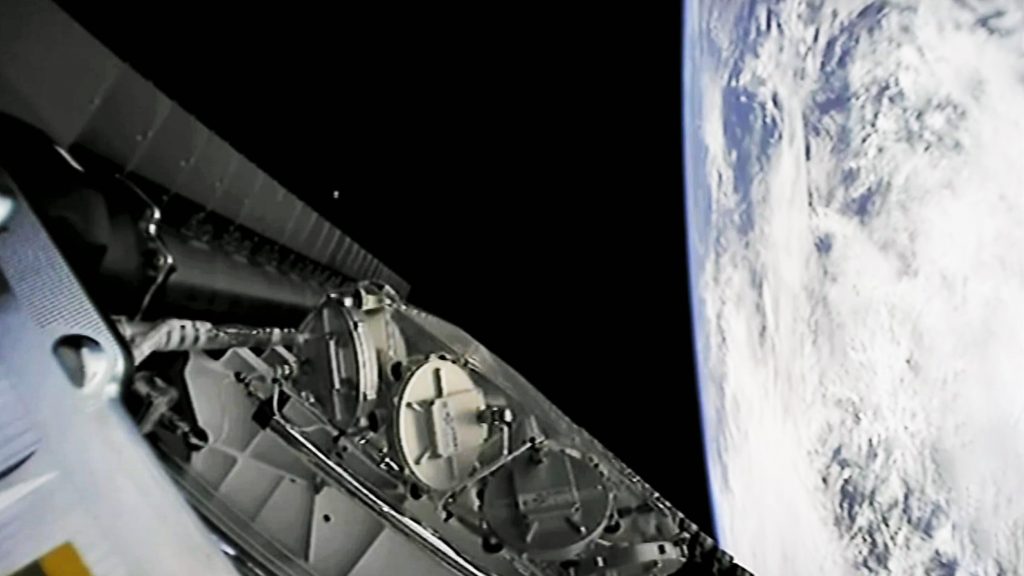
SpaceX has also beaten its 2020 record of 26 launches completed in one year and still has at least three or four more launches planned in 2021 – potentially pushing the company past the 30-launch mark before the end of the year. Up next, SpaceX is scheduled to launch NASA’s Imaging X-ray Polarimetry Explorer (IXPE) no earlier than (NET) 1am EST (06:00 UTC), December 9th; Turkey’s Turksat 5B communications satellite NET 10:58 pm EST (3:58 UTC), December 18th; Cargo Dragon 2’s CRS-24 space station resupply mission NET 5:06 am EST (10:06 UTC), December 21st; and (potentially) Starlink 2-2 or 2-3 NET late December.

News
Another Tesla Model 3 variant sold out for January 2026 in China
A look at Tesla China’s order page shows that new Model 3 LR RWD orders now have an estimated delivery date of February 2026.
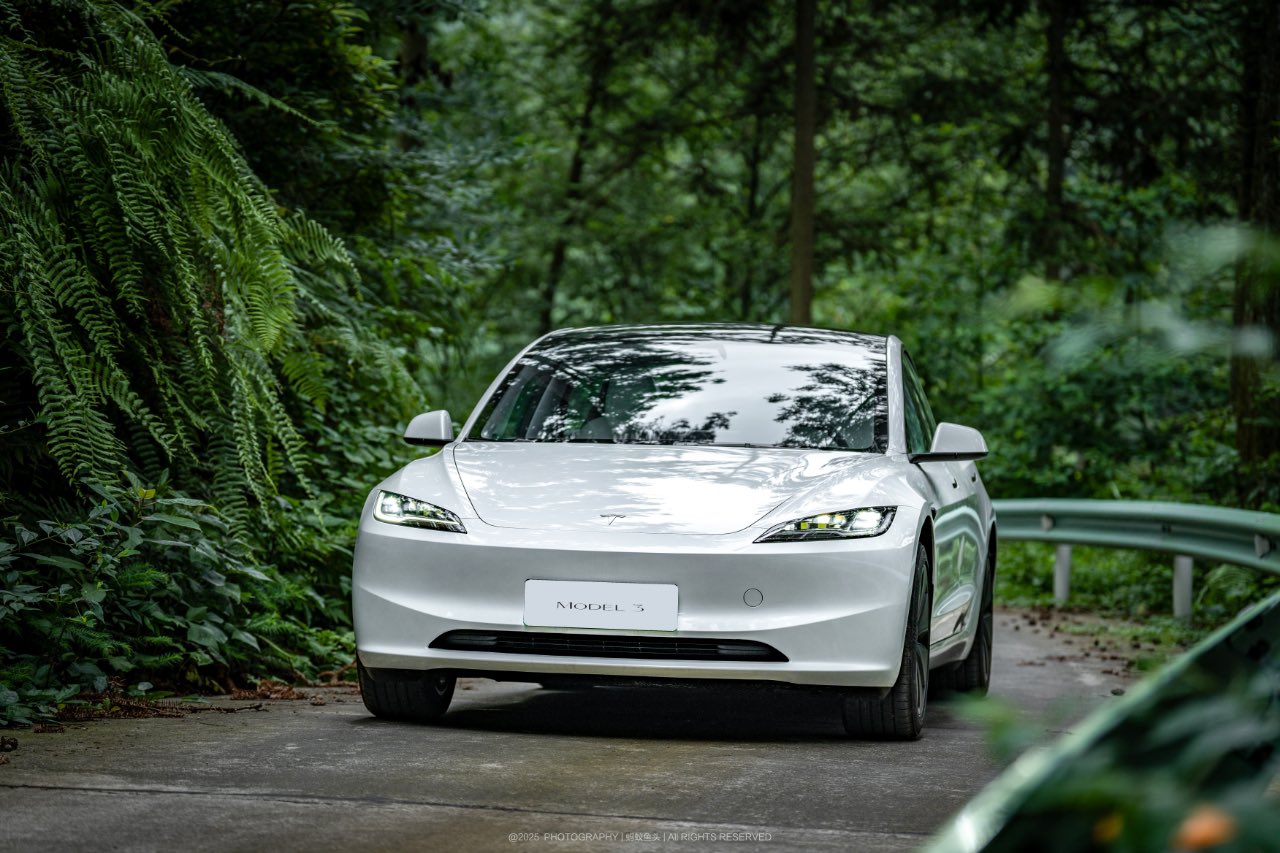
Another Tesla Model 3 variant in China appears to have sold out for January 2026, with the vehicle now showing an estimated delivery date of February 2026 for new orders. This bodes well for the all-electric sedan, which has maintained notable sales despite more affordable rivals like the Xiaomi SU7 and its crossover sibling, the Model Y.
Model 3 LR RWD joins February 2026 queue
A look at Tesla China’s order page for the all-electric sedan shows that new Model 3 Long Range Rear Wheel Drive orders now have an estimated delivery date of February 2026. Priced from RMB 259,500 ($36,810), the LR RWD sits as the second-lowest-priced trim in Tesla China’s four-variant Model 3 lineup. The move follows a similar delivery timeframe for the Model 3 Performance, which remains the most expensive option for the vehicle, as noted in a CNEV Post report.
The estimated delivery dates of the two remaining Model 3 variants remain unchanged for now. The base RWD version, starting at RMB 235,500, and the LR AWD variant, priced from RMB 285,500, both continue to list estimated delivery times of 4-6 weeks. Tesla China, for its part, has continued to list in-stock Model 3 vehicles and is actively encouraging buyers to select inventory units for delivery before the end of the year.
Model Y delays and policy shifts
Delivery timelines for the Model Y in China are also stretching into 2026. All customized Model Y variants now show February 2026 as their estimated delivery date, except for the entry-level version, which still lists January 2026. Tesla has been urging customers since November to prioritize purchasing inventory vehicles, a push aimed at maximizing year-end deliveries.
Timing matters for Chinese buyers due to upcoming changes in government incentives. China’s new energy vehicle purchase tax exemption will be scaled back in 2026, which means customers who take delivery next year could face higher tax costs compared to those who are able to receive vehicles before the end of the year.
As per data from the China Passenger Car Association, Tesla recorded retail sales of 73,145 vehicles in November, down 0.47% year over year. From January through November, Tesla’s retail sales in China totaled 531,855 units, a 7.37% year-over-year drop.
News
Wedbush’s Dan Ives sees ‘monster year’ ahead for Tesla amid AI push
In a post on X, the analyst stated that the electric vehicle maker could hit a $3 trillion market cap by the end of 2026 in a bullish scenario.

Wedbush analyst Dan Ives is doubling down on Tesla’s (NASDAQ:TSLA) long-term upside. In a post on X, the analyst stated that the electric vehicle maker could hit a $3 trillion market cap by the end of 2026 in a bullish scenario, thanks to the company’s efforts to develop and push its artificial intelligence programs.
An aggressive valuation upside
Ives, Wedbush’s global head of tech research, stated in his post that Tesla is entering a pivotal period as its autonomy and robotics ambitions move closer to commercialization. He expects Tesla’s market cap to reach $2 trillion in 2026, representing roughly 33% upside from current levels, with a bull case up to a $3 trillion market cap by year-end.
Overall, Ives noted that 2026 could become a “monster year” for TSLA. “Heading into 2026, this marks a monster year ahead for Tesla/Musk as the autonomous and robotics chapter begins. We believe Tesla hits a $2 trillion market cap in 2026 and in a bull case scenario $3 trillion by end of 2026… as the AI chapter takes hold at TSLA,” the analyst wrote.
Ives also reiterated his “Outperform” rating on TSLA stock, as well as his $600 per share price target.
Unsupervised Full-Self Driving tests
Fueling optimism is Tesla’s recent autonomous vehicle testing in Austin, Texas. Over the weekend, at least two Tesla Model Ys were spotted driving on public roads without a safety monitor or any other occupants. CEO Elon Musk later confirmed the footage of one of the vehicles on X, writing in a post that “testing is underway with no occupant in the car.”
It remains unclear whether the vehicle was supported by chase cars or remote monitoring, and Tesla has not disclosed how many vehicles are involved. That being said, Elon Musk stated a week ago that Tesla would be removing its Safety Monitors from its vehicles “within the next three weeks.” Based on the driverless vehicles’ sightings so far, it appears that Musk’s estimate may be right on the mark, at least for now.
News
Production-ready Tesla Cybercab hits showroom floor in San Jose
Tesla has implemented subtle but significant updates to both the Cybercab’s exterior and interior elements.
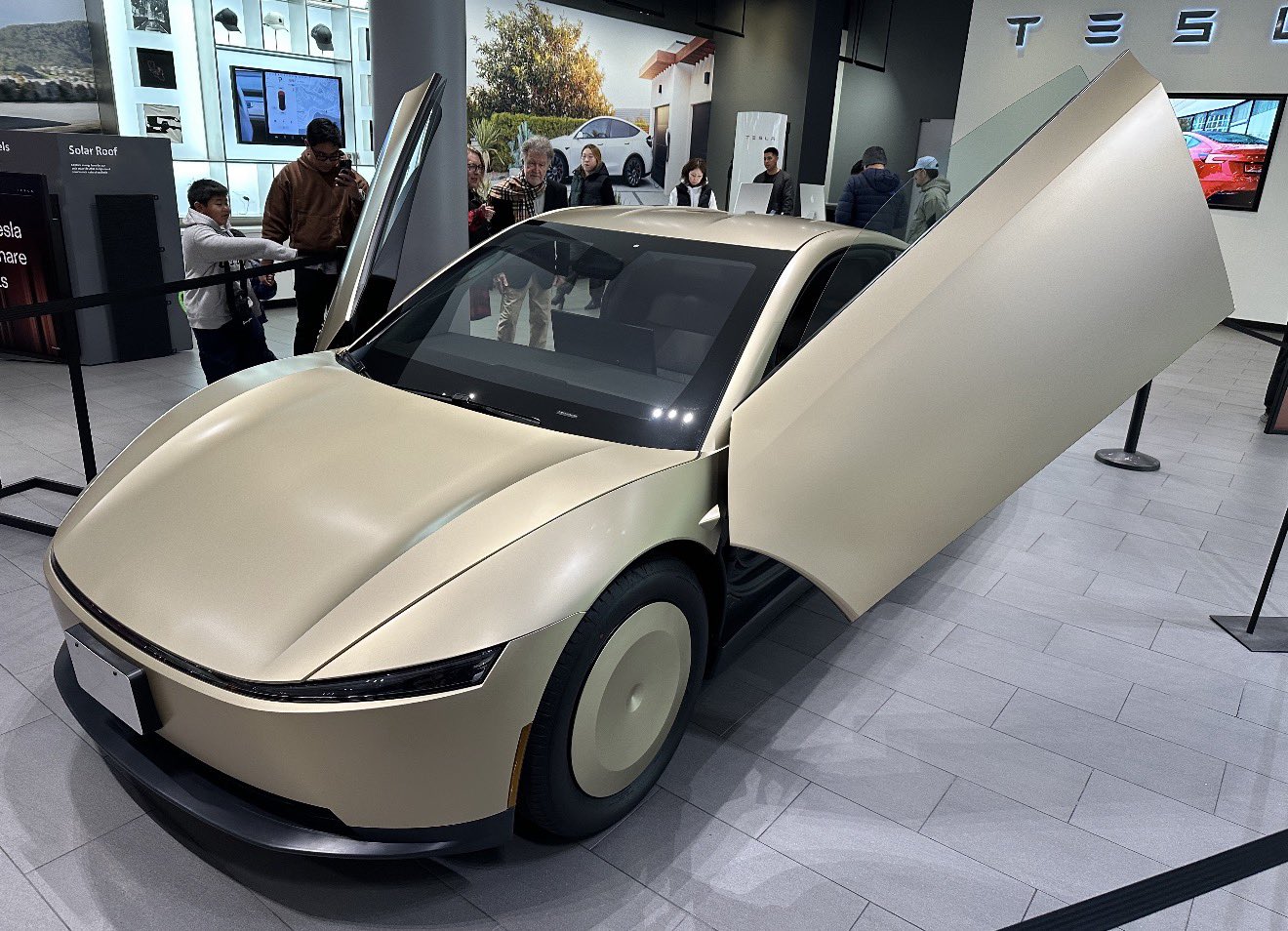
Tesla has showcased what appears to be a near-production-ready Cybercab at its Santana Row showroom in San Jose, California, giving visitors the closest look yet at the autonomous two-seater’s refined design.
Based on photos of the near-production-ready vehicle, the electric vehicle maker has implemented subtle but significant updates to both the Cybercab’s exterior and interior elements, making the vehicle look more polished and seemingly more comfortable than its prototypes from last year.
Exterior and interior refinements
The updated Cybercab, whose photos were initially shared by Tesla advocate Nic Cruz Patane, now features a new frameless window design, an extended bottom splitter on the front bumper, and a slightly updated rear hatch. It also includes a production-spec front lightbar with integrated headlights, new wheel covers, and a license plate bracket.
Notably, the vehicle now has two windshield wipers instead of the prototype’s single unit, along with powered door struts, seemingly for smoother opening of its butterfly doors. Inside, the Cybercab now sports what appears to be a redesigned dash and door panels, updated carpet material, and slightly refined seat cushions with new center cupholders. Its legroom seems to have gotten slightly larger as well.
Cybercab sightings
Sightings of the updated Cybercab have been abundant in recent months. At the end of October, the Tesla AI team teased some of the autonomous two-seater’s updates after it showed a photo of the vehicle being driven through an In-N-Out drive-through by employees in Halloween costumes. The photos of the Cybercab were fun, but they were significant, with longtime Tesla watchers noting that the company has a tradition of driving its prototypes through the fast food chain’s drive-throughs.
Even at the time, Tesla enthusiasts noticed that the Cybercab had received some design changes, such as segmented DRLs and headlamps, actual turn signals, and a splitter that’s a lot sharper. Larger door openings, which now seem to have been teasing the vehicle’s updated cabin, were also observed at the time.
